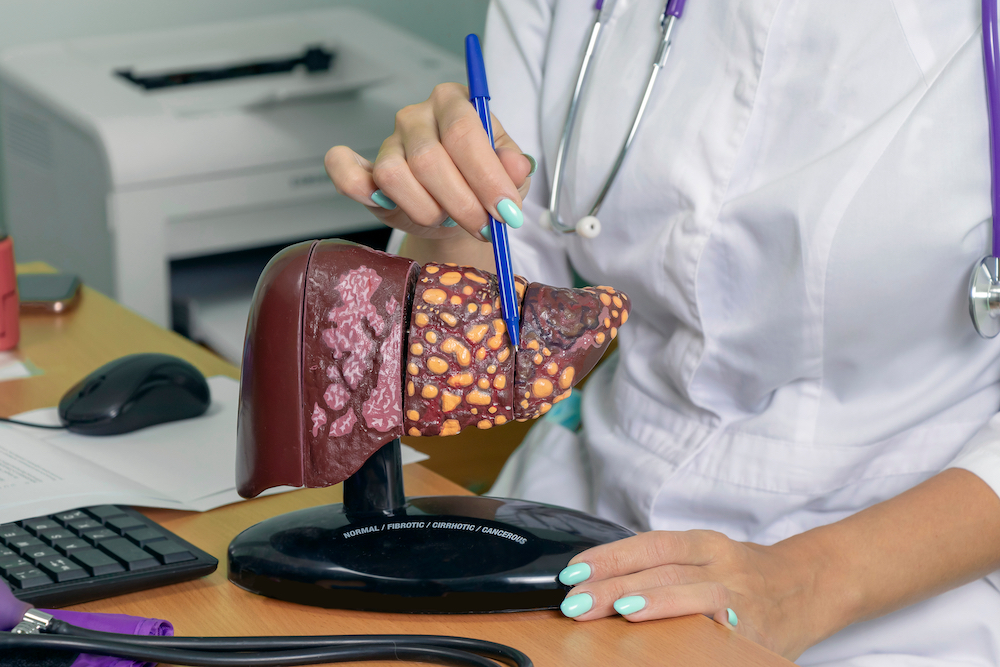The cost of ignoring MASLD: A look at the disease and economic impact
 Metabolic dysfunction-associated steatotic liver disease is a growing health problem affecting an estimated 3.6 million of people in the United States. Many don't even know they have it until it becomes serious. If left untreated, MASLD can lead to severe liver damage, including cirrhosis and liver cancer. Not only does this put people's health at risk, but it also costs our health care system billions of dollars.
Metabolic dysfunction-associated steatotic liver disease is a growing health problem affecting an estimated 3.6 million of people in the United States. Many don't even know they have it until it becomes serious. If left untreated, MASLD can lead to severe liver damage, including cirrhosis and liver cancer. Not only does this put people's health at risk, but it also costs our health care system billions of dollars.
New research, published online by the Journal of Hepatology, suggests that a future treatment that stops MASLD from getting worse could significantly reduce both the number of MASLD patients and health care costs.
In the new study, Institute Director Arun Sanyal, M.D., and colleagues from the Center for Disease Analysis Foundation, used a computer model to predict how MASLD will progress over the next 20 years. They looked at five different situations: one where nothing changes and four others where awareness, screening and treatment improve.
The model suggested that doing nothing could lead to $520.3 billion in health care costs over a 20-year period. In addition, current treatments, which mainly target fat buildup in the liver, could have very little impact on stopping severe liver disease. However, if there were a treatment that could stop fibrosis progression, that hypothetical therapy could show a much greater benefit.
If a new therapy could stop liver scarring, the study predicts it could:
- Reduce serious liver disease cases by 11-39%
- Lower the number of liver cancer cases by 10-34%
- Cut liver-related deaths by 8-31%
- Save $40.5 — $99.1 billion in health care costs over 20 years
These results highlight the urgent need for better treatment options and early intervention strategies.
Currently, only a small percentage of people with MASLD are diagnosed. Many doctors may not test for it unless a patient shows signs of liver damage. However, research suggests that treating MASLD early — before it reaches the advanced fibrosis stage — can be both more effective and less expensive.
To improve diagnosis and treatment, health care providers need better screening tools for MASLD. Imaging tests, such as ultrasounds, can help detect liver fat, but they can be costly. Developing a cheaper and more accessible test could help more patients get diagnosed and treated early.
The model found that the biggest reductions in health care costs came from treating people with advanced fibrosis. This makes sense because late-stage liver disease is incredibly expensive to manage. For example, liver transplants cost hundreds of thousands of dollars, and ongoing care for severe liver disease is also costly.
A new drug that could stop fibrosis from worsening could save billions of dollars in health care costs. In addition, it could improve the quality of life for millions of people, reducing the number of workdays missed and overall societal burden.
The research underscores several important steps that should be taken to fight MASLD:
- Increase awareness: More doctors and patients need to be educated about MASLD and the importance of early diagnosis.
- Improve screening: Developing reliable and cost-effective tests will help identify patients before they reach advanced stages of the disease.
- Invest in better treatments: Current treatments that only target liver fat are not enough. Future therapies need to stop fibrosis progression.
- Standardize care: Implementing screening guidelines and making treatment more accessible could save lives and reduce costs.
MASLD is a growing health crisis that could lead to billions of dollars in health care costs if left unaddressed. While current treatments have limited impact, a future therapy that stops fibrosis from worsening could significantly reduce severe liver disease cases and health care costs. By increasing awareness, improving screening, and investing in better treatments, MASLD could be prevented from becoming an even bigger public health problem.